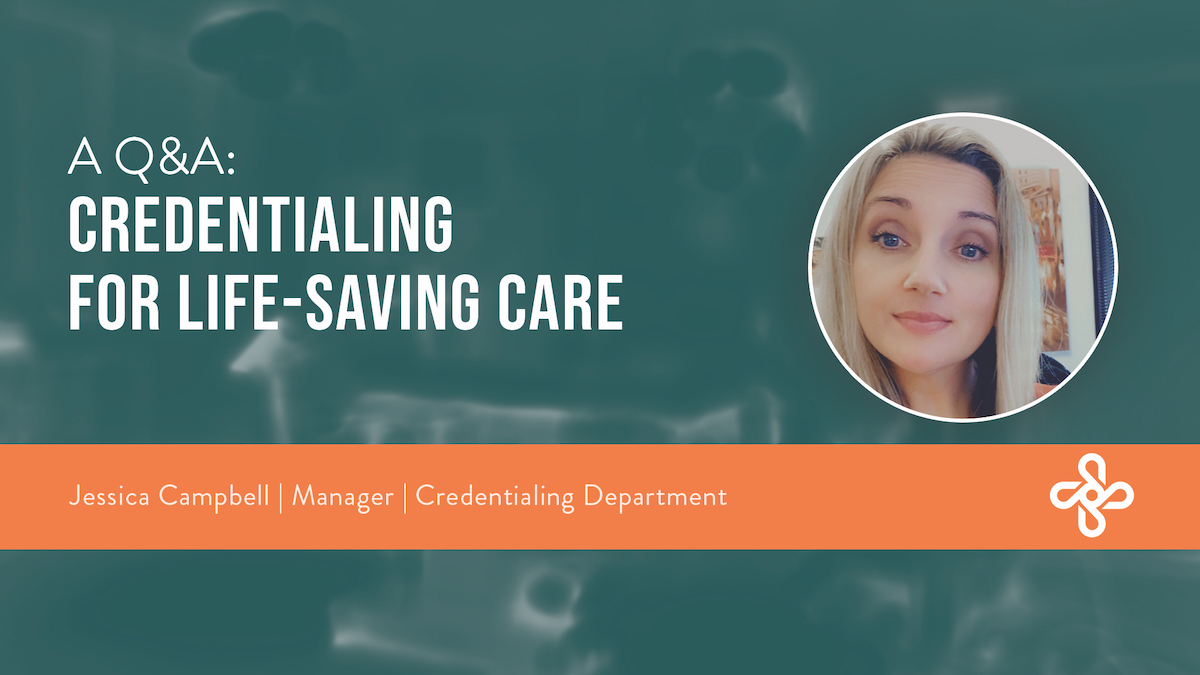
Bill Bynum
President, Surgical Services
January 19, 2017
Those of us who work in healthcare understand the importance of structured processes and clear communication during a patient handoff. Discontinuity puts the patient at risk and increases the likelihood of medical errors. As an outsourced OR services provider, a handoff takes on another meaning for us at SpecialtyCare—the transfer of an entire service without interrupting hospital operations or compromising patient care.
Recently, a large health system—based largely on the strength of our surgical assist and minimally invasive surgical support (MISS) services already in place within the system—awarded us a contract to provide MISS at 11 additional hospitals. The project involved two separate handoffs. The first required our SpecialtyCare MISS implementation team (our SWAT team, if you will) to work with the customer and the existing MISS provider to take ownership of the service. The second handoff shifted responsibility from the SWAT team to the permanent, full-time team members who would provide MISS at each of the 11 hospitals. It was a tremendous undertaking that reinforced the value and necessity of collaborative teamwork, effective communication, and structured implementation processes.
Fortunately, the customer was a great partner throughout the transition. Together, we addressed tactical challenges, such as avoiding short-term contract extensions for the exiting MISS provider. Using a rolling deployment schedule, we concurrently phased in service at multiple facilities with a goal of completing implementation at two hospitals per month over a five-month period—a much accelerated timeline. It required augmenting our implementation team with experienced MISS staff from other geographic regions to ensure that high-quality support continued without interruption while new staff members (26 people in all) were recruited, onboarded, and trained.
Needs Assessment
The first phase of the project focused on understanding the needs of the customer, which started with discussions at the top level of the system. Today, the needs of a healthcare organization extend beyond patient care—the organization must also create an environment that attracts and retains top surgeons. With increasing frequency, executives recognize that OR service providers like SpecialtyCare are, at least in part, responsible for creating such an environment. We understand this, too, and emphasize its importance as part of our Clinical Partners for Life program.
As the customer’s high-level needs crystallized, the implementation team conducted a more detailed assessment to refine the deployment plan. Process reviews and one-on-one interviews with nurse managers and others were vital to understanding the unique challenges of implementation at each hospital. They also further informed the service protocols, staffing model, and contingency plans that now expedite cases and ensure smooth operation every day. Just as importantly, these ongoing discussions (including in-service sessions and meet & greet opportunities) helped build relationships that fostered trust and confidence, which can require extra effort to achieve when the decision to change service providers is made at the system level.
Surgeon Satisfaction
SpecialtyCare’s surgical assistants who already worked in the health system also contributed to our information gathering efforts. Their familiarity with the surgeons and other medical staff helped us update the surgeon preference cards and customize our own checklists and communication logs. As we see time and again during service handoffs, preference cards and pick lists are often outdated or incomplete. Some people keep preferences “in their head” or see an atypical preference so often that it seems routine and fails to be communicated. That’s why we make a special effort to talk with, probe, and listen to as many people as possible—it results in a reliable set of documentation that helps us anticipate surgeons’ needs.
We also begin building relationships with surgeons before our first official day in the OR, oftentimes through product fairs. As an equipment-agnostic provider, an MISS implementation is a great opportunity to introduce surgeons to new tools and equipment. Discussions over product features reveal how a surgeon likes to work, which further identifies preferences and clarifies expectations, enabling us to be totally prepared on Day One.
Seamless Integration
While the implementation team was embedded alongside the customer’s surgical staff, our recruiters were hard at work finding and onboarding skilled communicators and relationship builders. Our trainers conducted double classes—in both the classroom and the simulation OR—preparing our newest associates to meet the demands of high-quality MISS support. As the associates passed their formal assessments and demonstrated their readiness to advance, they moved to their assigned customer hospitals. There, they shadowed and received additional training from the SWAT team members familiar with the people, routines, and unique needs at each facility.
Custom field training was tailored to support the types of procedures being performed, the specific equipment in use, and the needs of each hospital and surgeon. The technicians were systematically introduced to the customer’s staff and processes, enabling them to gain credibility, build relationships, and develop additional proficiencies along the way. As the technicians methodically phased into the lead role, the SWAT team members slowly moved to the back—continuing to observe, assess, and mentor as needed.
In the end, our permanent MISS technicians were well prepared and in place according to the timelines established by the customer. At each hospital, the final handoffs were so seamless they often went unnoticed. The success of this project relied on the best practices we’ve developed over time and continue to refine as part of our focus on continuous improvement and clinical excellence. It also relied on a strong, collaborative partnership with the customer. I could not be more proud of everyone who contributed to this achievement, including our “new” MISS technicians who continue to provide great support every day. This was one of our most logistically complex service transfers to date, but we love a challenge and look forward to our next opportunity.
LEARN MORE ABOUT MISS
LEARN MORE ABOUT SURGICAL ASSIST



Comments are closed.